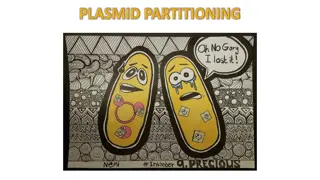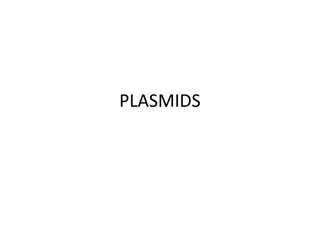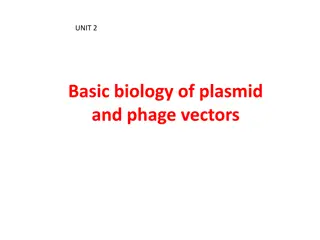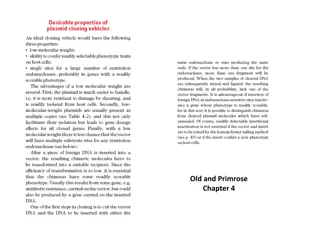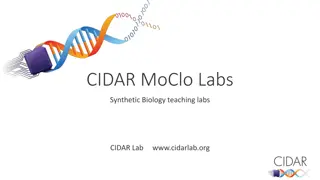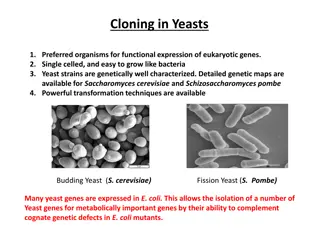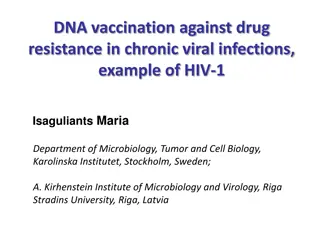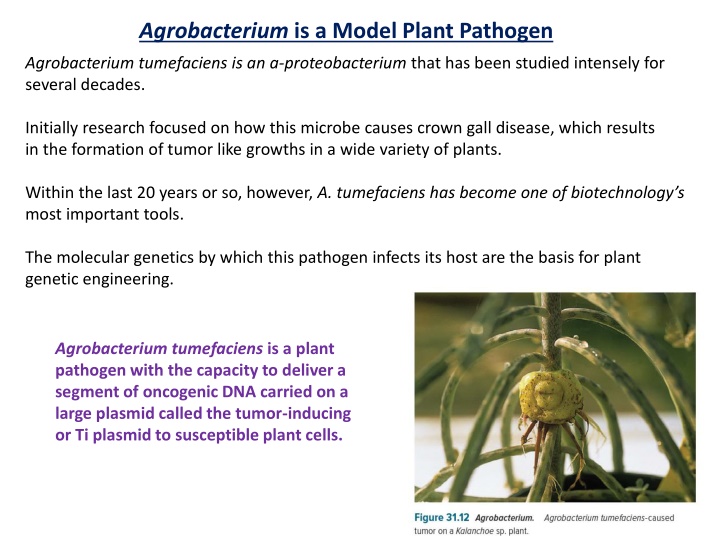
Agrobacterium tumefaciens: Plant Pathogen & Genetic Engineering Tool
Agrobacterium tumefaciens, a model plant pathogen, infects plants by delivering oncogenic DNA from the Ti plasmid, leading to tumor formation. This bacterium has become crucial in plant genetic engineering, utilizing genes like virD1 and virD2 to integrate T-DNA into plant genomes and induce tumor growth. Understanding its infection mechanisms contributes to biotechnology advancements.
Download Presentation

Please find below an Image/Link to download the presentation.
The content on the website is provided AS IS for your information and personal use only. It may not be sold, licensed, or shared on other websites without obtaining consent from the author. If you encounter any issues during the download, it is possible that the publisher has removed the file from their server.
You are allowed to download the files provided on this website for personal or commercial use, subject to the condition that they are used lawfully. All files are the property of their respective owners.
The content on the website is provided AS IS for your information and personal use only. It may not be sold, licensed, or shared on other websites without obtaining consent from the author.
E N D
Presentation Transcript
Agrobacterium is a Model Plant Pathogen Agrobacterium tumefaciens is an a-proteobacterium that has been studied intensely for several decades. Initially research focused on how this microbe causes crown gall disease, which results in the formation of tumor like growths in a wide variety of plants. Within the last 20 years or so, however, A. tumefaciens has become one of biotechnology s most important tools. The molecular genetics by which this pathogen infects its host are the basis for plant genetic engineering. Agrobacterium tumefaciens is a plant pathogen with the capacity to deliver a segment of oncogenic DNA carried on a large plasmid called the tumor-inducing or Ti plasmid to susceptible plant cells.
Two of genes, virD1 and virD2, encode proteins that excise a specific region of the Ti plasmid, called T DNA. After excision, the T DNA fragment is integrated into the host plant s genome. Once incorporated into a plant cell s genome, T DNA directs the overproduction of phytohormones that cause unregulated growth and reproduction of plant cells, thereby generating a tumor or gall in the plant. The genes for plant infection and virulence are encoded on an A. tumefaciens plasmid called the Ti (tumor-inducing) plasmid. These genes include 21 vir genes (vir virulence), found in six separate operons. stands for
The vir genes are not expressed when A. tumefaciens is living saprophytically in the soil. Instead, they are induced by the presence of plant phenolics and monosaccharides in an acidic (pH 5.2 5.7) and cool (below 30 Degree) environment. The microbe infects its host through a wound. Upon reception of the plant signal, a two-component signal transduction system is activated: VirA is a sensor kinase that, in the presence of a phenolic signal, phosphorylates the response regulator VirG. Activated VirG then induces transcription of the other vir genes. This enables the bacterial cell to become adequately positioned relative to the plant cell, at which point the virB operon expresses the apparatus that will transfer the T DNA. This transfer is similar to bacterial conjugation and involves a type IV secretion system. After VirD1 and VirD2 excise the T DNA from the Ti plasmid, the T DNA, with the VirD2 protein attached to the 5 end, is delivered to the plant cell cytoplasm. The protein VirE2 is also transferred, and together with VirD2, the T DNA is shepherded to the plant cell nucleus, where it is integrated into the host s genome.
Once it is part of the host cell genome, the T DNA has two specific functions. First, it directs the host cell to overproduce phytohormones that cause tumor formation. Second, it stimulates the plant to produce special amino acid and sugar derivatives called opines. Opines are not metabolized by the plant, but A. tumefaciens is attracted to opines; chemotaxis of bacteria from the surrounding soil population will further advance the infection because the bacterium can use opines as sources of carbon, energy, nitrogen, and, in some cases, phosphorus.
Ti plasmids traditionally have been classified by opine type, and two best-characterized Ti plasmids designated as the octopine- and nopaline-types. Several octopine-type (pTiA6, B6, Ach5, 15955, R10) and nopaline- type (pTiC58, pTi37) Ti plasmids have been extensively characterized and many have been sequenced at this time. All Ti plasmids code for functions associated with i) plasmid replication and maintenance, ii) conjugative transfer, iii) virulence, iv) opine utilization, and v) sensory perception of exogenous signals released by the plant host and neighboring agrobacterial cells at the site of infection. In A. tumefaciens , the T-DNA (Transfer DNA) contains two types of genes; (a) oncogenic genes which are encoding for enzymes involved in the synthesis of auxins and cytokinins that are responsible for tumor formation, and (b) the genes which are encoding synthesis of opines that are responsible for the formation of the novel amino acid- sugar conjugates
There are six operons organized in the vir region of Ti Plasmid (30 kb) essential ( virA , virB , virD , and virG) or enhancing the transfer efficiency ( virC and virE) for the T-DNA transfer. In addition, there are also two more operons, which are not necessary for T-DNA transfer called virF and virH.
Collectively, these translocation systems are called the type IV secretion systems (T4SSs) encoded by VirB/D4 proteins.
Ti Plasmid 1.Signal Recognition 2.T-DNA Processing 3.T-DNA Travelling 4.T-DNA Integration Crown gall disease


